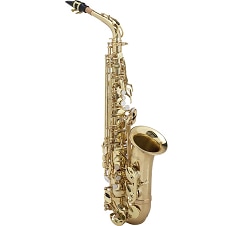September 03, 2020
Beginner Saxophones vs Intermediate Saxophones


Levels of Saxophone
Saxophones are divided into different groups based on playing level: beginner (or student), intermediate, and professional (or performance) saxophones. Pretty much all student saxophonists start playing on a beginner horn, which makes perfect sense! But once a student has reached a certain playing level, they’ll probably start thinking about stepping up to a better horn and will want to look at buying an intermediate sax.
What to Look for in Student Saxophones
Student / beginner saxophones are made with the new player in mind. They are usually lighter weight and easier to play so the student won’t struggle to produce sound while learning the fundamentals.
In recent years, manufacturers have focused a lot of attention on creating beginner saxophones. They have strived to create horns that are affordable, while offering comfort and the ability to create good tone that will help keep a young player interested in playing and developing their skills. With that said, not all horns are created equal, so don’t buy a super cheap beginner saxophone for your young students! Instead, be sure to buy a horn from a reputable brand, like Allora or Jupiter, so the instrument is durable, sounds good and is not difficult to play.
Construction and Materials of Beginner Saxes


What Do Intermediate / Step Up Saxophones Offer?
As you can guess from the name, intermediate saxophones (sometimes referred to as step ups) bridge the gap between student and professional instruments. Intermediate horns usually don’t produce quite the fullness of tone you’ll find in pro saxes and they usually have less handwork and cosmetic detailing than high-end horns.
When Should a Student Step Up to an Intermediate Sax?
Once a student has made a commitment to the saxophone and has progressed beyond the fundamentals, they (along with the music they’re learning to play) will outgrow the student sax. These players generally start to desire a higher level of performance, sound, and responsiveness. Intermediate models, including those from great brands like Yamaha and P. Mauriat, offer these characteristics, plus they add in features that will help to further improve the player’s ability and skill.
What are the Differences Between Student and Intermediate Horns?
Some notable differences you’ll see in an intermediate sax include: a fuller richer sound, better intonation, quicker and truer response, and added key mechanisms that make the instrument easier to play and extend its range.









